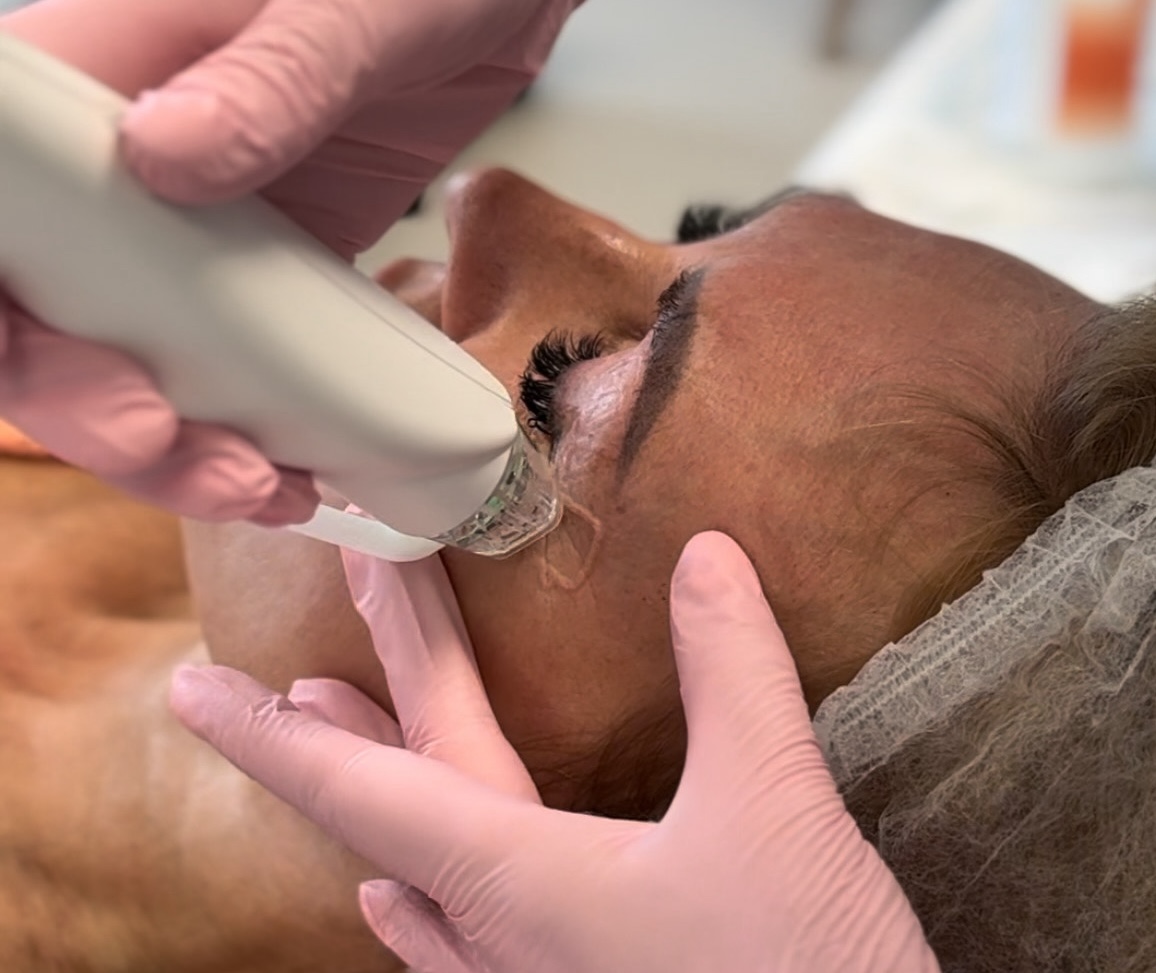What is Radiofrequency Microneedling?
Radiofrequency (RF) microneedling is a skin rejuvenation procedure that combines controlled microtrauma using microneedles with radiofrequency energy.
The goal of the microneedles is to stimulate the production of collagen and elastin by creating micro-injuries in the skin. The radiofrequency energy heats the tissue in the deeper layers, enhancing collagen production even further.
This treatment focuses on improving skin quality (such as firmness and tone) and refining texture (e.g., enlarged pores, acne scars).
At Dr. Mari Laasma’s Laser & Aesthetic Clinic, the procedure also includes a soothing and firming serum, a hydrogel mask that speeds up healing, and LED light therapy. For best results, we recommend combining the treatment with exosomes or iPRF.
What Are the Indications for Recell Ice RF Microneedling?
- Facial and jawline skin laxity
- Wrinkles
- Enlarged pores
- Uneven skin texture
- Aging skin
- Atrophic scars, including acne and stretch marks
- Uneven skin tone
- Sagging skin on the body (e.g., arms, inner thighs, abdomen, knees)
Which Areas Can Be Treated?
RF microneedling is suitable for improving and tightening the skin on any area of the body, but especially effective and visibly noticeable in the following:
- Face
- Neck
- Abdomen
- Upper arms
- Knees
- Inner thighs
When Will I See Results and How Long Do They Last?
Initial results may be visible in about 3 weeks, with final results developing over 3 to 6 months.
For optimal outcomes, we recommend 3 to 4 sessions spaced 4–8 weeks apart.
The results typically last around one year.
Aftercare Instructions:
- Redness and swelling may occur within the first 24–72 hours. Use cold compresses and antihistamines to reduce swelling if needed
- Tiny scabs may appear and remain for up to a week, depending on treatment intensity
- Itching is common as the old skin sheds and new skin regenerates—do not pick or scratch to avoid infection, pigmentation, or scarring
- Avoid using active ingredients, serums, fragranced lotions, or soaps on treated skin
- Refrain from using Retin-A, glycolic/salicylic/alpha hydroxy acids, acne creams, or abrasive exfoliants for at least 5 days
- Use soothing creams to calm the skin and reduce redness
- Keep skin clean, especially on the day of treatment—avoid makeup and other cosmetics that day. Mineral makeup can be used the next day
- Avoid any activities that may irritate the skin (e.g., sauna, steam, swimming, intense workouts)
- Strictly avoid sun exposure on treated areas for at least 14 days
- Apply SPF 30–50+ sunscreen daily for several weeks post-treatment, as your skin will be highly sensitive to UV
- Use gentle cleansers only until full recovery
Main Contraindications:
- Active herpes
- Inflammatory skin conditions (rosacea, acne, rashes)
- Allergic, very dry, fragile, or easily irritated skin
- Use of isotretinoin (Accutane/Roaccutane)
- Excessively tanned skin
- Chemotherapy or radiation therapy
- Pregnancy and breastfeeding
- Use of anticoagulants
- Immunosuppressive medication or weakened immune system
- Heart conditions, epilepsy, uncontrolled hypertension
- Pacemaker
- Permanent implants in the treatment area
- History of keloids or hypertrophic scarring
- Diabetes or thyroid dysfunction
- Ongoing anti-inflammatory treatments

